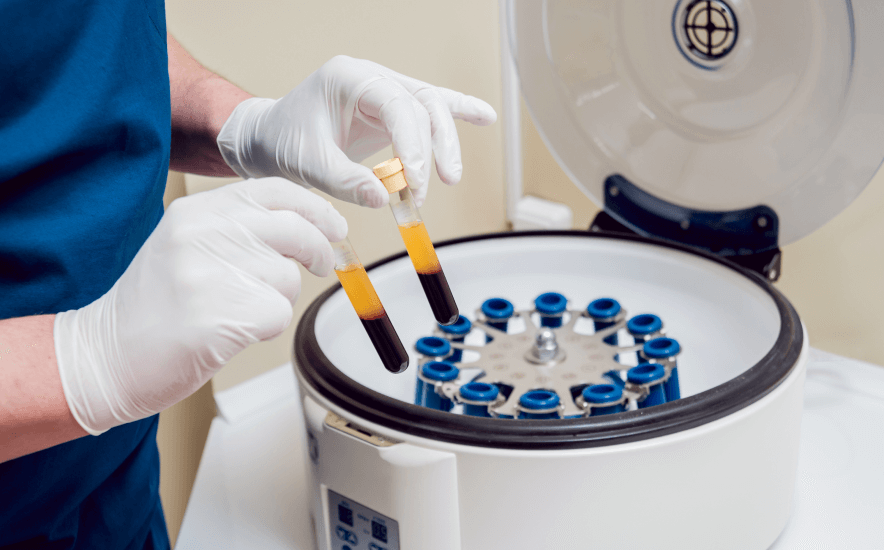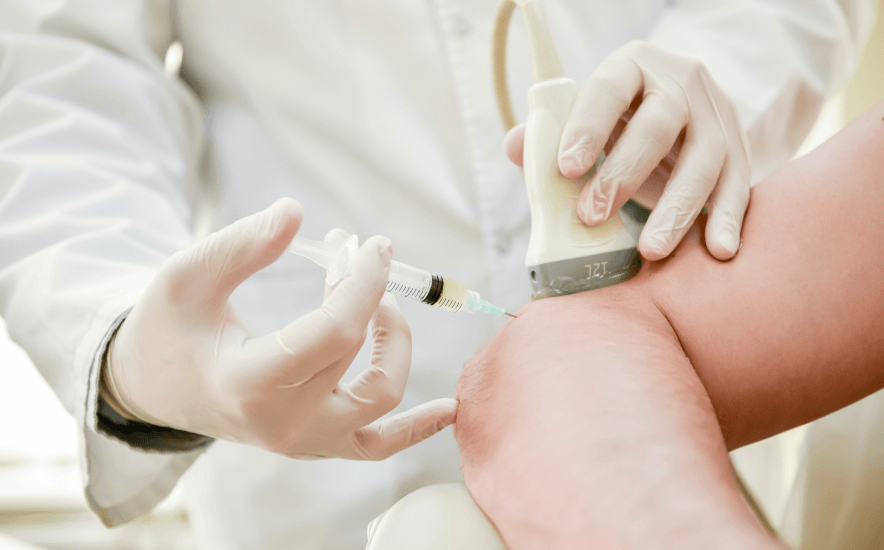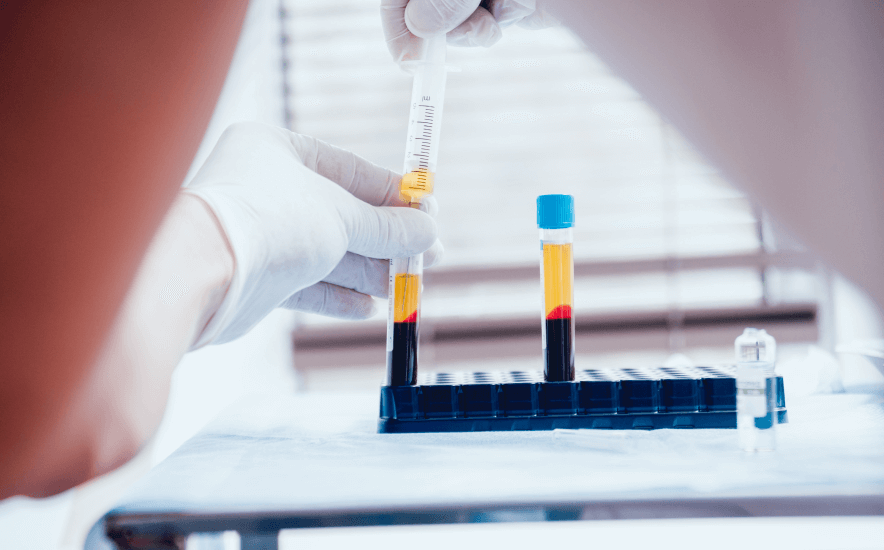What is Platelet-Rich Plasma Therapy?



Benefits
Promotes Natural Healing
Reduces Pain & Inflammation
Accelerates Recovery
Minimally Invasive
Improves Joint Function
Longer-Lasting Results
Reduction in Medications
Low Risk of Side Effects
Expanded Guide
Platelet-Rich Plasma (PRP) Therapy is an innovative regenerative medicine treatment designed to accelerate healing in damaged tissues using a patient’s own blood. PRP therapy leverages the natural healing properties of platelets, which are blood components that contain growth factors and proteins essential for tissue repair, inflammation reduction, and regeneration. PRP is widely used in orthopedics and sports medicine for injuries such as tendonitis, ligament sprains, and osteoarthritis, as well as in aesthetics and dermatology for skin rejuvenation and hair restoration. By injecting concentrated platelets directly into the injured area, PRP Therapy stimulates the body’s natural healing processes, promoting faster recovery and enhanced tissue health.
How PRP Therapy Works
The PRP procedure begins with a simple blood draw, usually from the patient’s arm. The blood is then processed in a centrifuge to separate its components, concentrating the platelets into a plasma solution. This PRP solution, rich in growth factors and regenerative proteins, is then injected into the target area, such as a joint, tendon, or muscle. The injection is often guided by ultrasound to ensure precision. Once injected, the platelets release growth factors that attract reparative cells to the injury site, accelerating tissue repair, reducing inflammation, and promoting cellular regeneration. PRP therapy is minimally invasive, requiring only a small needle and no incisions, making it a convenient and low-risk option for patients seeking non-surgical solutions.
Conditions Treated with PRP Therapy
PRP therapy has become a popular option for treating a wide range of musculoskeletal conditions. It is commonly used for joint pain due to osteoarthritis, where PRP can help reduce pain and improve joint function by stimulating cartilage repair. Tendon injuries, such as tennis elbow, Achilles tendonitis, and rotator cuff injuries, are also frequently treated with PRP, as it can help repair damaged tendon fibers and speed recovery. PRP is also used for ligament injuries, such as sprains or partial tears, and has shown promise in enhancing recovery from surgery by promoting faster tissue repair. In recent years, PRP has expanded into dermatology, where it is used for skin rejuvenation, reducing wrinkles, and treating hair loss by stimulating hair follicles.
Benefits
Platelet-Rich Plasma (PRP) Therapy offers several key benefits for patients seeking natural healing solutions for injuries and chronic conditions. One of the main advantages is that it promotes healing by using the patient’s own blood, harnessing growth factors to repair damaged tissues. PRP therapy effectively reduces pain and inflammation, making it a valuable option for managing conditions like osteoarthritis, tendonitis, and ligament injuries. By concentrating healing factors in the affected area, PRP therapy accelerates recovery, particularly in soft tissue injuries related to muscles, tendons, and ligaments. The procedure is minimally invasive, involving only simple injections without the need for incisions or prolonged downtime, making it a convenient alternative to surgery. PRP also enhances joint function, especially in cases of osteoarthritis, where it improves lubrication and mobility, thus improving overall joint health. Unlike temporary pain relief options, PRP targets underlying tissue damage, often providing longer-lasting results as tissues regenerate naturally. Many patients find they can reduce or even eliminate their need for pain medications, which helps avoid the potential side effects of long-term drug use. Additionally, PRP therapy has a low risk of adverse reactions since it uses the patient’s own blood, making it a safe and well-tolerated treatment choice for a wide range of conditions.
Conclusion
Platelet-Rich Plasma Therapy offers a powerful and natural way to promote healing and reduce pain for a variety of injuries and degenerative conditions. Its minimally invasive nature, combined with a low risk of complications, makes PRP an appealing choice for patients who prefer to avoid surgery or long-term medications. With promising results in both clinical studies and patient outcomes, PRP Therapy is a valuable tool in regenerative medicine, helping patients regain mobility, reduce pain, and enhance their quality of life through the body’s natural healing mechanisms.
Frequently Asked Questions
Have more questions? Schedule a consultation with Dr. Patel to gain additional insights and discuss treatment options. We are committed to advancing your health through patient education and a safe, minimally invasive approach.
Gramercy Center
Take the first step towards a healthier life by scheduling your initial consultation with Dr. Patel. At our clinic, we specialize in minimally invasive procedures that offer faster recovery, improved function, and decreased pain. Our client-centered approach ensures that you receive the highest quality care tailored to your unique needs. We look forward to offering you an exceptional experience.
